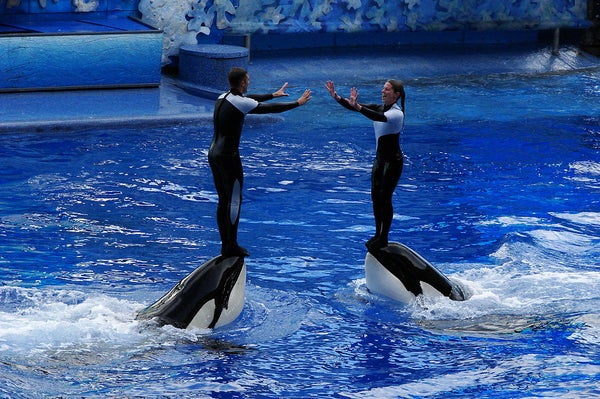This article was published in Scientific American’s former blog network and reflects the views of the author, not necessarily those of Scientific American
SeaWorld has just announced a major change in the way they do business, as far as their captive killer whales are concerned. In addition to ending their “sea circus” shows with killer whales - shows that have received criticism up to the level of the US Congress because of their lack of educational content—they will be halting any further breeding of their captive killer whales. This means that the captive killer whales currently held at SeaWorld parks will be the last killer whales held there.
This announcement comes after decades of bad publicity, which came to a head after two trainers were killed by SeaWorld orcas—incidents that spawned citations by the US Occupational Safety and Health Administration (OSHA), a series of court cases, the book Death at SeaWorld, and the award winning documentary Blackfish. The unexpected success of the documentary, aided by a massive and continuous campaign by online animal activists, led to something that has been referred to as the “Blackfish Effect”: a decline in visitor numbers at SeaWorld parks, a barrage of negative publicity and declining stock prices. Years of poor stock performance and the introduction of a series of state and Federal laws that would phase out captive killer whales, undoubtedly influenced SeaWorld’s decision to change its practices.
However, SeaWorld’s announcement goes beyond just captive killer whales. They also announced that they would no longer take any wild-caught marine mammals for their facilities, and would minimize the use of wild-caught ornamental fish, which are often captured in ways that are severely damaging to coral reef ecosystems. They pledged that the food products at all of SeaWorld Entertainment’s 11 parks (including Aquatica and Busch Gardens) will now come from only sustainable and more humane sources. They will also serve more vegan and vegetarian food at their restaurants.
On supporting science journalism
If you're enjoying this article, consider supporting our award-winning journalism by subscribing. By purchasing a subscription you are helping to ensure the future of impactful stories about the discoveries and ideas shaping our world today.
SeaWorld will refocus on their animal rescue and rehabilitation work, which has to date been more of a peripheral activity.
Of particular interest is SeaWorld’s pledge to be more engaged in conservation issues, with an announcement that they will be spending $50 million over five years on advocacy for a number of marine conservation issues including:
So-called “scientific whaling”
Commercial seal hunts
Destruction of coral reefs and capture of tropical fish for the aquarium trade
Shark finning
Marine conservationists have also approached SeaWorld suggesting that they should invest their substantial resources toward some of the most threatened cetacean species, such as the critically endangered vaquita, river dolphins in the Amazon, Ganges and Indus rivers and severely threatened populations of Irrawaddy dolphin and the Taiwanese white dolphin—issues on which SeaWorld has never before been engaged.
SeaWorld has received considerable criticism from NGOs and scientists for only paying lip service to conservation in the past, by claiming that it was a major force in marine conservation whereas the reality was that their contribution towards the conservation of wild species was a minute fraction of their annual budget (e.g., just over $70,000 in total to wild cetacean conservation over a 10 year period ) despite being a billion dollar company.
Absent from their announcement was any discussion of coastal “retirement” sanctuaries for their captive cetaceans – facilities that are being developed for captive cetaceans in Europe and bottlenose dolphins in the US, and which were originally part of a proposed law in California. In fact, the Society for Marine Mammalogy hosted a scientific workshop this past December to discuss the logistical and legal aspects of establishing such coastal cetacean sanctuaries.
Nevertheless, the orca advocacy community considers SeaWorld’s announcement to be a huge move in the right direction, and a sign that the management of SeaWorld parks is realizing that the general public no longer considers performing orcas to be appropriate in the 21st Century. It seems that SeaWorld’s management has finally realized that it needs to adapt in order to survive.
